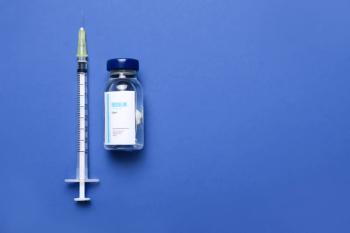
Naloxone Sales Highlight Limited OTC Use, Access Challenges
Key Takeaways
- FDA's OTC naloxone approval intended to improve access, but retail sales remain limited, possibly due to high costs.
- Study shows OTC naloxone sales averaged 396 units per million residents, significantly lower than pharmacy and program distributions.
Researchers explore OTC naloxone sales sold independently at pharmacies and programmatically from 2023 to 2024.
Despite the FDA approval of OTC naloxone attempting to increase overall access, recent sales of the product in retail locations show limited use, according to a study published in JAMA Internal Medicine.1 While the FDA’s actions were made to directly improve naloxone access, findings from September 2023 to September 2024 show that access challenges are persisting, potentially due to cost.
“At the US opioid crisis peak, fatal overdoses exceeded 80,000 annually; this number has recently decreased, attributed in part to enhanced naloxone availability,” wrote authors of the study. “Individuals in the US historically accessed naloxone via pharmacists or through free distribution programs. In September 2023, naloxone became available without a prescription (ie OTC).”
On March 29, 2023, the FDA approved the very first OTC naloxone nasal spray (Narcan), and the product hit shelves less than 6 months later.1,2
READ MORE:
According to the National Institute on Drug Abuse, 2016 and 2017 were the worst years of the opioid epidemic in the US, with over 17,000 overdose deaths in both years from prescription opioids alone.3 While the era of peak opioid overdose deaths is seemingly behind, they are still occurring at alarming rates, despite events like naloxone’s approval and an overall increased prioritization for decreasing overdose deaths.
CDC data shows a decrease of around 27,000 overdose deaths from October 2023 to September 2024—a similar timeframe in which investigators of the current study explored regarding OTC naloxone sales. According to Allison Arwady, MD, MPH, director of the CDC's National Center for Injury Prevention and Control, this decrease in overdose deaths is “unprecedented.”1,4
However, regardless of the improvement in opioid overdose death rates in recent history, researchers wanted to better understand OTC naloxone’s role in improving overdose rates and how the FDA’s actions directly impacted the overall opioid epidemic. “We examined first-year OTC naloxone sales trends independently and compared with pharmacy-dispensed and program-distributed naloxone,” they continued.1
In an exploration of naloxone use from September 2, 2023, through September 28, 2024, researchers compared the OTC sale of naloxone in over 19,000 retail stores with naloxone distributed via a government or community program as well as pharmacy-dispensed naloxone from a prescription.
With the help of retailer market-level NielsenIQ data, researchers calculated mean, county-level sales prices, and number of units sold for OTC naloxone at these various retail locations. Data for program-distributed naloxone were obtained through published research spanning from August 2022 to 2024, while pharmacy-dispensed naloxone data were obtained the same way and only included 2023 data.
Addressing the county-level statistics of OTC distribution at retail locations, researchers sought total naloxone sales per million residents of each respective state and county.
“We examined mean biweekly OTC naloxone sales per million residents for all continental US states, states in each quartile of program-distributed naloxone rates, and states in each quartile of pharmacy-distributed naloxone rates, testing for significant differences between the first and fourth quartiles using Mann-Whitney tests with Bonferroni adjustment,” they wrote.1
With the aim of detailing OTC naloxone sales and their rates of change throughout the study period, researchers explored data from 136,239 OTC naloxone units sold. Among those units sold at various US retail locations throughout the country, the average number per state was 396 per 1 million residents.
On the other hand, for state program- and pharmacy-distributed naloxone, units per 1 million residents were much higher when compared with retail sales. Pharmacy-distributed naloxone averaged 7063 units per million residents in 2023, and program-distributed units reached an average of 12,015 per million residents from August 2022 to 2024.
While the existence of OTC naloxone may vary among regions that may be in greater need of the product than other areas, the current study highlights limitations in retail-dispensed OTC naloxone that are outweighed by pharmacist-dispensed and state program-distributed product sales.
“Although US FDA approval of OTC naloxone was intended to facilitate access, our results show limited uptake,” concluded authors of the research letter.1 “Even at peak levels, fourth quartile 2023 OTC sales of 119 units per million were much lower than the 1551 pharmacy-dispensed naloxone prescriptions per million residents that quarter. These low rates may reflect high mean OTC prices of almost $50.”
READ MORE:
Pharmacy practice is always changing. Stay ahead of the curve: Sign up for our
REFERENCES
1. Stein BD, Landis RK, Smart R, et al. Over-the-counter retail naloxone sales. JAMA Intern Med. 2025;185(11):1393–1395. doi:10.1001/jamainternmed.2025.4590
2. FDA approves first over-the-counter naloxone nasal spray. News Release. FDA. March 29, 2023. Accessed November 3, 2025. https://www.fda.gov/news-events/press-announcements/fda-approves-first-over-counter-naloxone-nasal-spray
3. Drug overdose deaths: facts and figures. National Institute on Drug Abuse. August 2024. Accessed November 3, 2025. https://nida.nih.gov/research-topics/trends-statistics/overdose-death-rates#Fig4
4. CDC reports nearly 24% decline in U.S. drug overdose deaths. News Release. FDA. February 25, 2025. Accessed November 3, 2025. https://www.cdc.gov/media/releases/2025/2025-cdc-reports-decline-in-us-drug-overdose-deaths.html
Newsletter
Pharmacy practice is always changing. Stay ahead of the curve with the Drug Topics newsletter and get the latest drug information, industry trends, and patient care tips.

















































































































